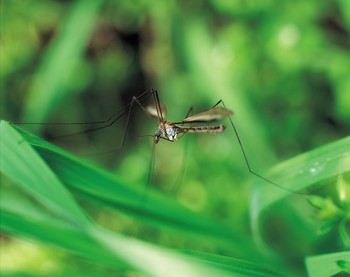 Last summer’s West Nile fever season came as a rude awakening for most Americans — and in particular, for residents of Dallas and Fort Worth, Texas.
Last summer’s West Nile fever season came as a rude awakening for most Americans — and in particular, for residents of Dallas and Fort Worth, Texas.
The Dallas-Fort Worth area was the epicenter of 2012’s unprecedented resurgence of the mosquito-borne virus, which had been relatively inactive during the previous four years. Dallas-Fort Worth accounted for the majority of West Nile activity in Texas, and the Lone Star State had more than a third of the nation’s total West Nile infections.
Why Dallas-Fort Worth, and why Texas? And what should we expect from the virus in the coming summer?
The answer to the first question, according to researchers: it’s complicated. And to the second: we don’t know, but we should be ready anyway.
“When this happened there were immediate suggestions that some specific change must have caused this — that the virus had suddenly become more virulent, or that a particular environmental factor was to blame,” said UTMB associate professor David Beasley, the lead author of a commentary on the resurgence now online in Antiviral Research. “However, from what has been reported about the 2012 outbreak so far, it seems that not much had changed at all — we just got the right confluence of factors that were needed for more intense transmission of virus.”
Human West Nile infections arrive via a circuitous path that involves not just mosquitoes, but also birds. In fact, researchers consider the passage of West Nile from mosquito to bird and back again to be the virus’ primary cycle; humans are generally infected after being bitten by mosquitoes that have fed on birds, whose blood contains high concentrations of the virus.
According to Beasley, the North Texas West Nile outbreak likely involved both mosquito-friendly climate conditions that resulted in an abundance of the species of mosquitoes that carry West Nile in Texas and the presence of large numbers of birds capable of being infected by the virus. Add in reduced human concern about the risk of infection — a result, in part, of the four-year lull in West Nile activity — and you have everything you need for a viral version of a “perfect storm” in Dallas-Fort Worth.
“It could just as easily have happened in any number of U.S. cities,” Beasley said. “Ultimately, it comes down to having infected mosquitoes and having susceptible amplifying hosts, which are the birds, and putting them in the same place as a large number of people who aren’t really paying much attention to whether they’re being bitten or not.”
In essence, then, it’s a matter of complicated odds: if the climatological, ecological and behavioral factors line up right, you’ve got a good chance of a bad summer for West Nile. But, since so many different variables are involved, it’s nearly impossible to predict exactly what will happen in advance.
“It’s kind of like predicting the weather,” Beasley said. “You can have a general idea about what’s likely to happen, about what locations have higher overall risks based on historical data, and you might be able to detect the early indicators of something that’s out of the ordinary. But predicting with weeks or months advance notice that something bad will happen this year or next year in a particular geographic area is certainly beyond what we can do now.”
That uncertainty makes it all the more important that West Nile surveillance programs are maintained, even during long periods in which the virus seems to have become dormant.
“West Nile is not going to go away,” Beasley said. “Activity may decline for a while, but that doesn’t mean we can forget about it, because we’re going to periodically see this kind of resurgence, and we have to be able to detect increased activity to give public health people a chance to respond, whether that’s with mosquito control or by raising public awareness.”